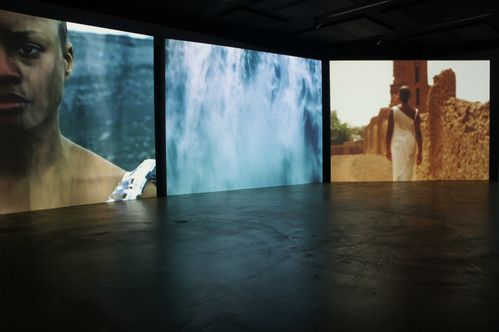The British artist Isaac Julien conjures up pictures of bewitching beauty in his films. Their superior splendor recalls classic artworks of the past. Skilled camera work, film editing, and modern image processing methods create a filmic rhythm that provides the basis for the magnificent panoramas seen in the artist’s installations.
Born in London as the son of Black immigrants, racial identity developed to become a focal theme in Julien’s work. After completing his degree in painting and fine art film, he founded Sankofa Film and Video Collective – a group that made an important contribution to black film culture in Great Britain from 1983 to 1992.
Fantôme Créole, a 4-channel film installation, is a development of these earlier projects. It is a work that was commissioned by Christine Van Assche for a solo exhibition at the Centre Pompidou, Paris, in 2005, and comprises film material from two other installations: True North, 2004, and Fantôme Afrique, 2005. Julien subsequently showed these two complex 3-channel installations at an exhibition in the Kestnergesellschaft in Hanover in 2006.
In Fantôme Creole, the two film installations combine to create a visually powerful story. In fascinating pictures, Julien recounts a tale of Africa from his perspective, contrasting these cinematic impressions with those of an imaginary expedition to the Arctic. The protagonist in Fantôme Creole is a black woman, a person on a quest, who leads us through African towns, villages, deserted areas, and into an open-air cinema. At the same time, she is the courageous explorer who, warmly wrapped in black fur, ventures with the Inuit across the vast, snow-covered Polar landscape. The ca. 24-minute film installation comprises various short sequences. While these sequences have a clear setting, there is no clear narrative plot. Combined with archive material from films about Africa, the result can thus be interpreted in many ways.
